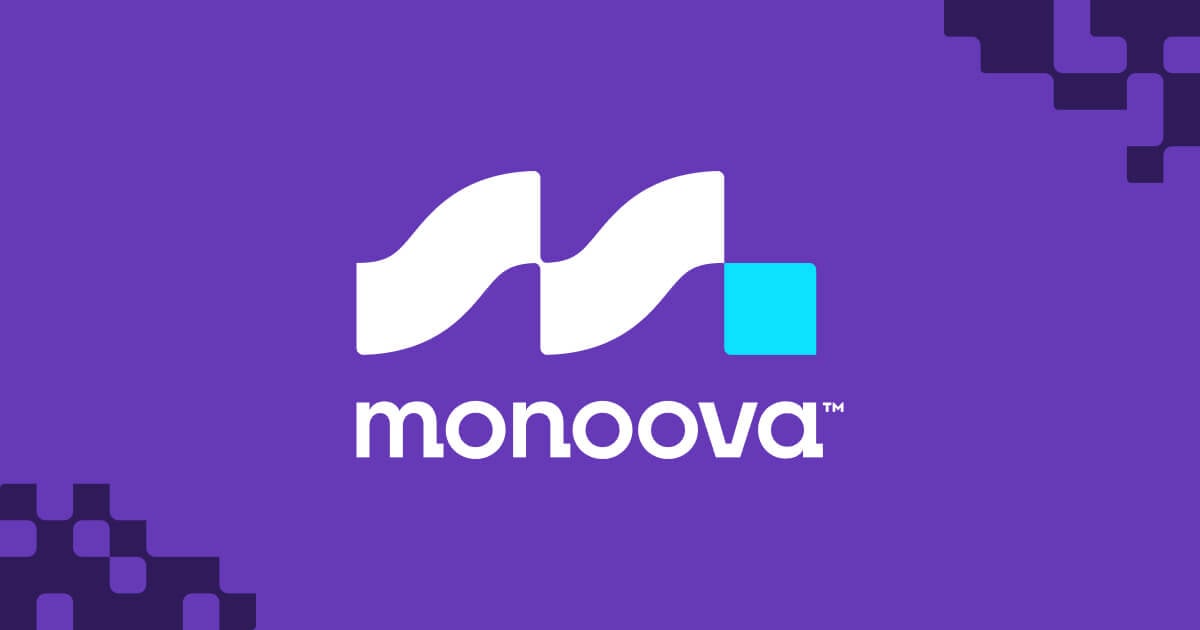Founders often try out various methods to boost growth across various stages of running a startup, such as social media posts, content marketing, online community building, and growth hacks. However, public relations (PR) for startup growth is one tactic that can sometimes be overlooked as it can feel a little overwhelming or unattainable.
PR involves consistent and strategic communication between the media and the organisation, to foster a positive relationship with the public through storytelling, announcements, reputation management, and handling crises. This includes compelling journalists, experts, and influencers to raise awareness of your company and brand.
For startups, PR aims to secure favourable press coverage in relevant outlets, from major publications like TechCrunch to specialist industry newsletters. While it may seem daunting, even small businesses can benefit from PR by learning to pitch stories effectively, leading to media coverage that fuels growth, increases product awareness, and enhances the company’s reputation.

The importance of good PR for startups
A significant aspect of digital marketing involves building your company’s narrative—whether it’s through blog posts outlining your vision, crafting tweets reflecting your brand’s personality, or outlining product benefits in emails. While these approaches can be impactful, they are undeniably less credible to the reader than the third-party credibility afforded by the media, as every company naturally believes in the value of its offerings.
Yet, when individuals contemplate adopting something new, they seek validation from external sources, be it customer reviews or tailored suggestions. Implementing a targeted PR strategy for startups can replicate this “word-of-mouth” effect but on a broader level by capturing the attention of the media.
Here’s why PR holds significance for startups
1) Amplify company visibility: Press coverage extends your reach beyond your existing customer base, putting your story in front of audiences cultivated by media outlets or influencers. Choosing the right platforms ensures your narrative reaches a receptive and engaged target audience.
2) Narrate your brand story: Startup PR offers a chance to move beyond promoting products and services, delving into brand storytelling that sets you apart from competitors and others in the market.
3) Boost customer acquisition: Strategic media placement can drive a surge in traffic to your website and social media channels, potentially translating into increased sales and a fresh influx of customers.
4) Enhance credibility: Positive media attention from reputable sources or trusted influencers acts as an endorsement that readers perceive as reliable.
5) Strengthen your talent pipeline: When individuals consider joining your startup, a positive reputation can ease their decision-making process. Favourable press coverage provides external validation about your company, addressing potential concerns as candidates conduct their research.
6) Attract investor interest: Press coverage also catches the eye of investors, prompting them to explore your business further. Alternatively, positive PR can feature in your investment pitch deck, signalling early interest and traction.
Craft Your Media Narrative
A crucial aspect of startup PR involves crafting the perspective you wish to present to the public. When reaching out to journalists to cover your company, what story do you aim to convey? This forms your media narrative.
Investing time in defining your media narrative(s) enables you to streamline your startup PR strategy internally and craft coherent pitches tailored to the right journalists and outlets. It’s essential to ensure that your chosen stories and angles are firmly rooted in reality—reflecting the genuine functionality of your product, the actual operations of your company, and the authentic beliefs of your team.
Media narratives that diverge from reality can swiftly lead to negative press and erode trust. However, it’s also valuable to explore truths that offer a fresh and captivating perspective, uncovering narratives less commonly portrayed in the media.
Product-Centric Narrative
The objective of a media narrative centred on your product is to generate interest in your offerings by highlighting features that benefit customers and showcasing your distinctive market position. Typically, journalists seek novelty or a unique selling proposition. Simply promoting standard features found in any app won’t captivate their interest.
Instead, emphasise what sets your product apart and elucidate it in an engaging, jargon-free manner. Alternatively, illustrate how your product aligns with prevailing movements or popular trends.
Questions to Shape Your product-focused media narrative:
– What competitive advantage does our product possess in comparison to others in the field?
– What novel capabilities does our product offer customers that they haven’t traditionally had access to?
– Do we have compelling anecdotes demonstrating how our product has uniquely benefited a customer?
– What cutting-edge technologies does our product leverage (e.g., AI, blockchain, no-code)?
– What distinguishes our approach to product development?
Brand-Centric Narrative
A brand-focused media narrative revolves around overarching storytelling about your company—whether it pertains to the industry your company operates in, the core beliefs it upholds, or distinctive operational practices. This narrative approach shifts the focus away from specific products and services and instead zooms in on your company’s ethos.
For example, Australia’s flagship deep tech incubator, Cicada Innovations has developed brand narratives on the importance of diversity in STEM and deep tech, garnering them many significant media placements for their unique operating style.
Questions to Shape Your Brand-Centric Media Narrative:
– What are our core brand values, and how have we demonstrated them in tangible ways as a company?
– How can we illustrate the broader impact our company has had on the lives or businesses of our customers?
– What emotions do we aim to evoke when our brand comes to mind or is encountered?
– Have we forged brand partnerships that effectively reflect our brand values?
– What unconventional company practices, policies, or traditions exemplify our company’s values?
Leader-Centric Narrative
Media narratives centred on leaders spotlight key individuals within your team, positioning them as authorities and experts who can provide insights on specific aspects relevant to your company.
Typically, leader-focused narratives spotlight C-suite executives. For instance, a Chief Technology Officer with profound expertise in artificial intelligence may be pitched to journalists covering AI topics.
However, other team members can also fulfil this role. For example, at GitLab, a company specialising in DevOps software, their Head of Remote frequently engaged in press interviews, offering expertise on operating as a fully distributed company.
Questions to Shape Your leadership-focused media narrative:
– What topics can our C-suite members speak authoritatively on?
– What expertise do other team members possess that could offer valuable insights to the press?
– Have we made notable hires that enhance our company’s credibility?
– Do any team members have compelling career narratives that align with why they joined our company?
Craft Your Startup PR Outreach Plan
Once you’ve defined the PR narratives you wish to share with the press, it’s essential to develop a robust PR outreach strategy aimed at engaging journalists and securing media coverage.
Founder-Led Outreach
Founders often find success in spearheading outreach efforts as journalists appreciate hearing directly from company leaders rather than intermediaries. Especially in the early stages of your startup, if you’re the founder, consider personally reaching out to journalists and pitching potential stories and angles about your company. This personal approach adds authenticity and can resonate well with journalists.
In-house PR Team Outreach
As your startup expands, founders may find themselves with less time to dedicate to PR activities and drafting pitch emails. In such cases, it’s common for a versatile marketer within the startup to take on the role of an in-house PR practitioner. They invest time in identifying suitable journalists, refining pitches, and reaching out to them. While journalists may still prefer to speak directly with a founder if the pitch is compelling, this strategy allows founders to delegate outreach tasks to someone intimately familiar with the company’s nuances, freeing up their time.
PR Firm Outreach
As your company scales further, outsourcing press relations to a PR firm becomes a common practice. However, the effectiveness of this approach can vary. A suitable PR agency will invest time in understanding your business deeply and possess an extensive network of media contacts, facilitating relevant placements. Before engaging a PR firm, conduct thorough research, including speaking with previous clients to assess the quality of their work and understand their approach to PR services and strategy. While hiring a PR firm can be costly, it can be a worthwhile investment during periods of company growth, allowing your team to focus on other priorities while entrusting research, outreach, scheduling, and measurement tasks to external professionals.
Identify the Right Journalists
Securing media coverage begins with identifying the appropriate journalists—typically those who cover topics relevant to your company. Avoid the common mistake of pitching to the wrong person by precisely identifying the right journalists to approach.
Find Relevant Media Outlets
Finding the right journalist starts with finding the right media outlet. Take time to compile a list of potential media companies aligned with the story you wish to tell and the readers you want to reach, considering the following.
Delve into Your Niche: Focus on outlets and publications covering the types of stories relevant to your company. For example, if you operate in the cybersecurity space, target publications with dedicated tech sections and journalists covering cybersecurity.
Identify Prospective Customers: Consider the online publications your potential customers frequent and where they might discover your brand.
Size and Reach: While landing coverage in top-tier outlets like TechCrunch or WIRED is desirable, also consider pitching to smaller publications, such as local news outlets, trade publications, and niche platforms, to increase your odds of coverage.
Track Your Competitors
Monitoring how and where your competitors are covered in the press can aid in refining your own positioning and identifying journalists who specialise in your industry.
Here’s how to stay informed about your competitors’ press coverage:
Google Alerts: Set up Google Alerts for specific keywords such as your competitors’ company name or the names of their founders. This allows you to receive regular updates containing links across the web mentioning the keywords you’ve specified.
Social Media Mentions: Regularly search your competitors’ social media profiles for press features or consider using robust social listening tools like Brandwatch, Meltwater, or Sprinklr.
Website: Browse through any press mentions highlighted on your competitors’ websites to gain insights into where and how they’ve been covered previously.
Network with Purpose
Forge connections with journalists and cultivate media relations through various channels, both online and offline. Online, follow journalists on platforms like Twitter and LinkedIn, and engage with their posts and articles by responding and occasionally commenting. In-person interactions, such as those at industry events, provide opportunities to initiate conversations with journalists covering relevant topics.
Laura Morelli, our Media Director, suggests that building relationships with journalists can begin simply on social media. “One of the best (and easiest) ways founders can establish and nurture relationships with relevant journalists is by simply engaging with them on social media,” she says. “This includes liking, commenting, and sharing their posts and stories. Be mindful not to come across as overly sales-oriented or pushy. Instead, engage with journalists in an authentic and genuine manner initially. Once you’ve established a rapport, it’s appropriate to begin sharing relevant content or information.”
Establishing familiarity can prove beneficial for both parties in the future. For instance, when pitching a journalist with whom you’ve built rapport, you can reference your previous interactions. Similarly, when journalists are seeking sources for a topic they’re covering, they may remember you and your company.
Consider Influencers
The realm of startup PR now encompasses collaboration with internet influencers and online personalities who shape company narratives, alongside traditional outlets and journalists. Influencers span various niches—ranging from tech-focused newsletter writers and AI-discussing TikTok creators to web3-themed YouTubers and business-tip-sharing podcasters. These creators offer avenues for potentially covering your business and conveying your company’s story. Explore diverse media channels beyond conventional outlets.
Keep in mind that influencers often operate under different ethical guidelines than journalists. While journalistic integrity typically prohibits publications from accepting payment for coverage to avoid bias, online creators commonly engage in paid media partnerships with businesses to access their online audience. Factor this into your startup PR strategy and budget accordingly.
Pitch Editors Directly
Rather than pitching journalists to write about your business, consider pitching editors to secure the placement of your own story in their publication. Many news outlets have editorial sections that accept op-eds, and various blogs and owned media sites welcome guest posts. If successful, you’ll collaborate with an editor to shape the narrative, allowing you to convey your company’s story in your own words.
Craft a Compelling Pitch
Mastering the art of crafting a compelling pitch and effectively promoting your company to relevant journalists is crucial in startup PR. An email pitch should focus on a specific aspect—whether it’s your product, brand, data, or leadership—providing newsworthy context about your business and explaining why a journalist should cover your story.
Find the Right Email Address
Before drafting your pitch, ensure you have the correct email address for the journalist. To find a journalist’s email address, check their Twitter bio, personal website, or publication byline page. Learn the publication’s email convention or use email address finder tools like Hunter, Zoominfo, or RocketReach.
Craft a Standout Subject Line
Given the inundation of pitches journalists receive daily, a compelling subject line is essential to grab their attention. Craft a subject line that entices the reader to open your email, providing enough detail for them to understand why you’re reaching out.
Personalise Your Pitch
While it’s essential to cast a wide net in your PR outreach, each email should be personalised to demonstrate why you’re reaching out to that specific journalist.
Morelli emphasises the significance of personalisation in pitching. “It’s crucial to tailor your pitch to a journalist’s beat,” she says. “Before reaching out, ensure you research the types of stories they cover and customise your pitch accordingly.” Including their name and outlet, referencing their previous work, and aligning your pitch with their interests enhances its effectiveness.
Craft a Compelling Story
Provide ample context in your pitch to unfold an engaging narrative. Instead of merely stating your company’s competition with established corporations, elucidate the prevailing issues within your industry, how your company addresses them, and the resulting benefits for customers. Alternatively, connect your company or brand to prevailing trends to captivate interest. Remember, you’re not just promoting your company; you’re narrating its story.
Ensure Newsworthiness
Incorporate elements in your pitch that render your story newsworthy, whether it’s a significant announcement, recent data, or groundbreaking technological advancements. Even if your pitch isn’t groundbreaking, ensure it offers something intriguing to the broader audience and contributes to the ongoing conversation.
Keep it Concise and Engaging
A compelling pitch should be concise, engaging, and easy to skim through. Aim to convey your message succinctly, with the most interesting aspect upfront. Utilise formatting techniques such as bullet points, bolding, or underlining to enhance readability. Anopol advises keeping pitches under 250 words, providing relevant facts, figures, and a clear call to action.
Follow Up Appropriately
If you haven’t received a response after a few days, it’s acceptable to follow up once. Briefly remind the journalist of your initial pitch, reiterate key details, and respect their time. Understand that emails can sometimes get lost amidst numerous pitches, and a follow-up may improve your chances of a response.
Maintain Connections
While not all pitches will lead to stories, initial interactions can foster mutually beneficial relationships. If a journalist declines your pitch, express openness to contribute as a subject matter expert for future pieces. Additionally, don’t hesitate to pitch new stories in the future.
Be Available for Interviews
If a journalist expresses interest in covering your story, they may request a phone interview. It’s advisable to make yourself available for the interview instead of relying on PR team members. Simplify scheduling by accommodating their calendar preferences.
Master Media Training Essentials
Your interactions with journalists, particularly during interviews and comment requests, significantly shape how your company’s narrative is portrayed in the media. Understanding how to effectively engage with the press can help position your company positively and prevent PR mishaps.
Understand Your Narrative
While interviews shouldn’t be scripted, you should be prepared to discuss key aspects of your company, including its founding story, growth metrics, differentiation from competitors, objectives, and cultural values.
Comprehend “On the Record”
Be mindful that unless agreed otherwise, every aspect of your conversation with a journalist is considered “on the record” and may be included in their article. Avoid saying anything you wouldn’t want to see in print.
Be Honest
Ensure honesty throughout your conversation with journalists, as many outlets conduct thorough fact-checking processes post-interview. Avoid exaggerations or falsehoods about your company, including growth metrics and operational practices.
Develop a Media Kit
A media kit, typically hosted on your website’s “Press” page, serves as a comprehensive multimedia resource containing essential company information for journalists and the press. It often includes a fact sheet detailing company background, product screenshots, logos, brand guidelines, team photos, and customer testimonials. Notable examples include media kits from companies like Slack, Zoom, and Notion.
Maximise Coverage Impact
Securing media coverage is just the beginning of your PR efforts. After publication, capitalise on the coverage through various post-publication activities:
1. Social Media Sharing: Share coverage across your social channels, including original posts, sharing outlet posts, and journalist posts. This boosts brand awareness and credibility among existing and potential customers.
2. Website and Press Kit: Add press coverage to a dedicated page on your website, enhancing trustworthiness and signalling a positive reputation.
3. Continued Pitching: Use previous coverage as leverage when pitching future stories, highlighting your company’s growing reputation and credibility.
Measure PR Impact
While measuring PR impact can be challenging, several metrics indicate the effectiveness of press coverage:
1. Total media hits and impressions
2. Share of voice within your industry
3. Website and app traffic, conversions, and referral traffic
4. Backlinks and their impact on SEO
5. Social media engagement and sentiment
6. Further press inquiries and additional coverage
Consistent and diligent engagement with the media is key to long-term success, even if measuring direct impact isn’t always precise. Ultimately, a well-executed PR strategy can elevate brand recognition and reach your target audience, albeit requiring dedication and persistence.
Grow your startup with Third Hemisphere
As evident, the diverse landscape of existing tech companies underscores the need for a one-size-fits-all approach to PR. With an array of innovative ideas emerging, the significance of marketing tech PR has never been more pronounced in distinguishing your brand and addressing people’s needs or enhancing their lives.
It’s also apparent that PR demands time and dedication to foster essential relationships and implement strategies to enhance brand visibility. Engaging with a specialised technology PR agency like Third Hemisphere can prove invaluable for tech companies seeking to prioritise their technology PR efforts. This rings especially true in the dynamic realm of technology, characterised by rapid innovation and evolving media landscapes. If you’re considering enlisting the services of a tech PR agency to propel your tech startup forward through digital PR services, SEO campaigns, media exposure, or thought leadership initiatives, feel free to reach out to us today to begin crafting a tailored strategy.










